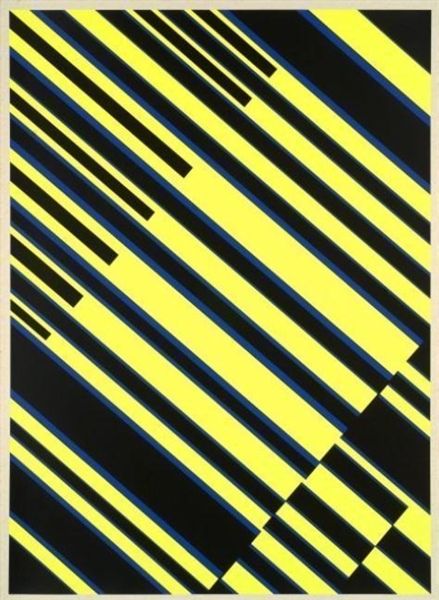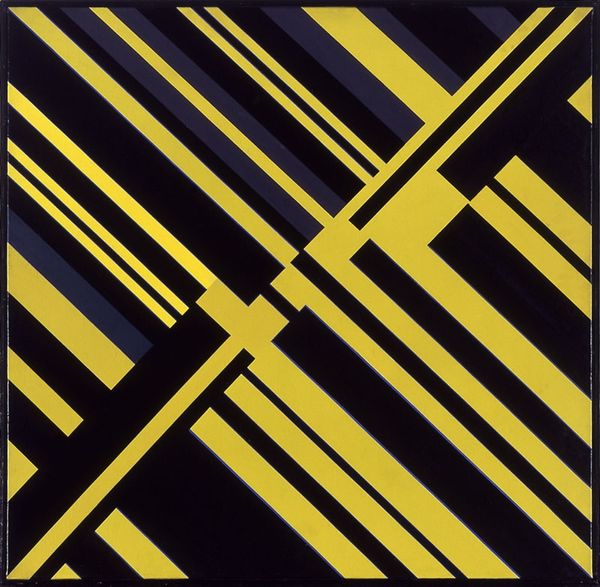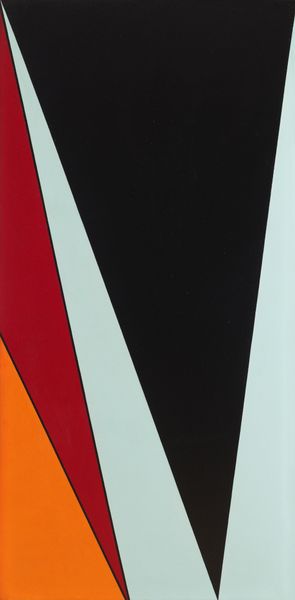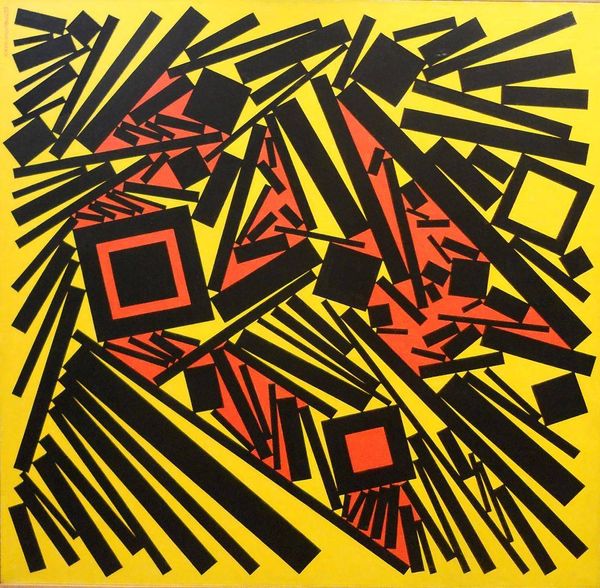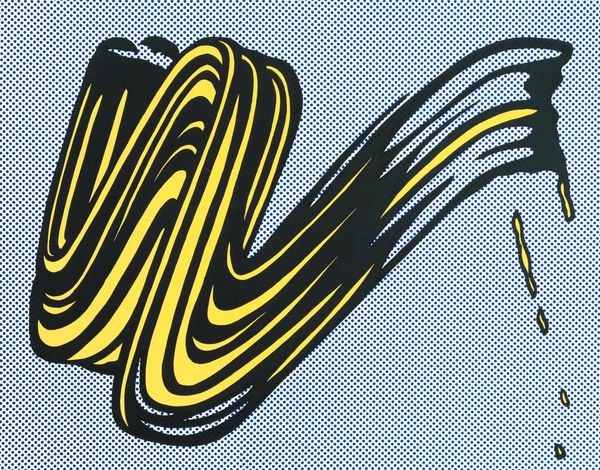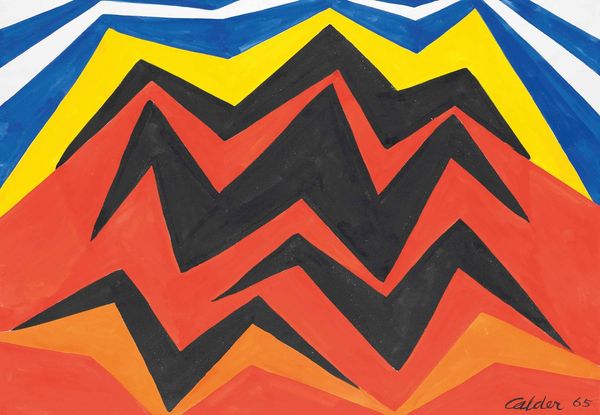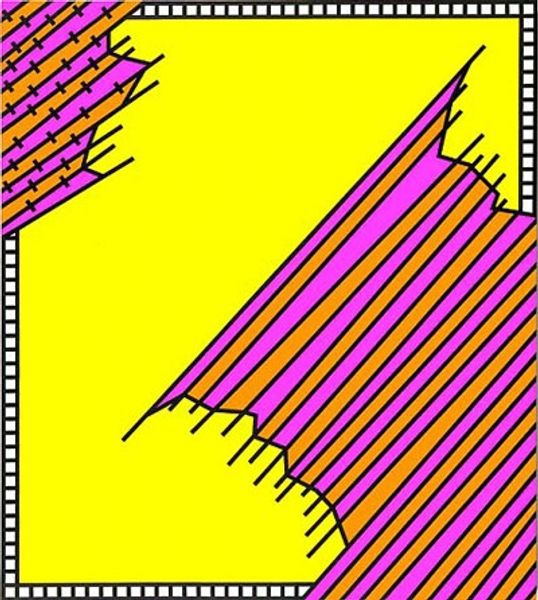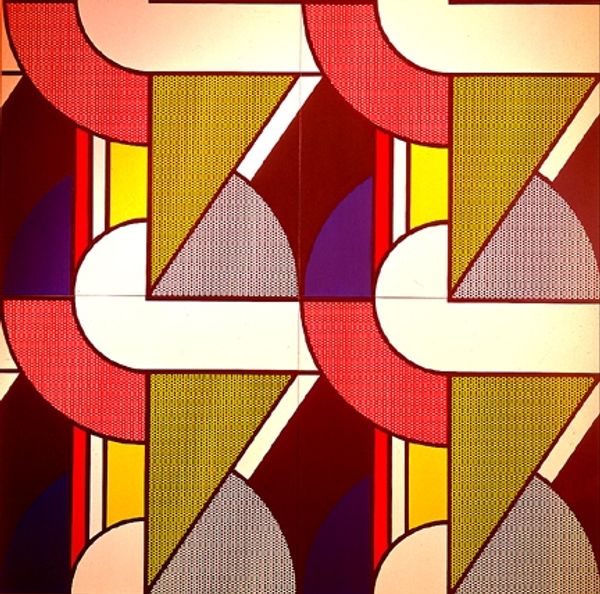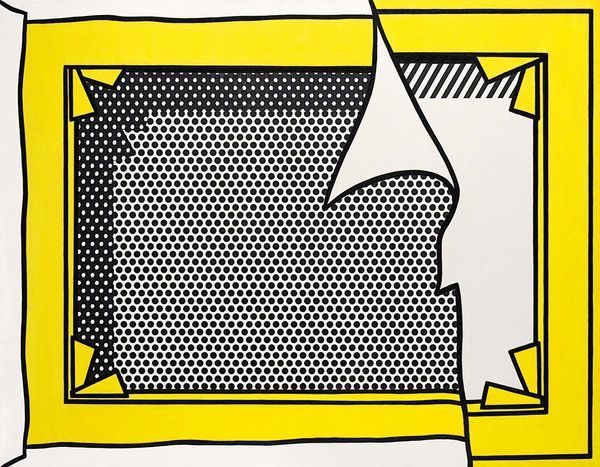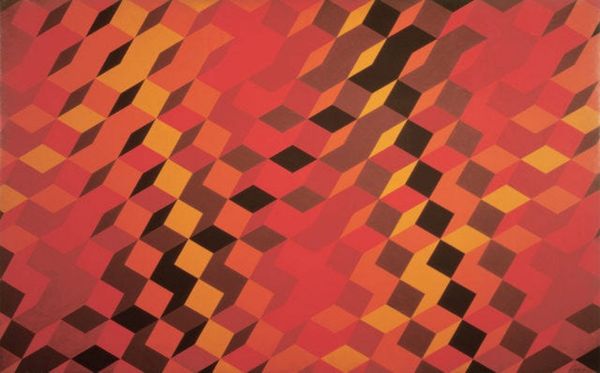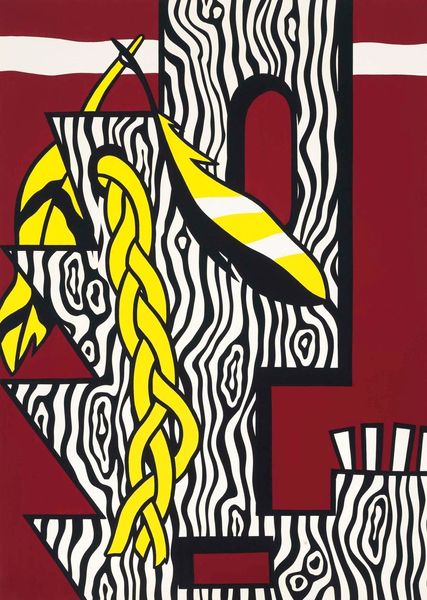
acrylic-paint
#
pop art-esque
#
abstract expressionism
#
pattern
#
op art
#
pop art
#
colour-field-painting
#
acrylic-paint
#
geometric
#
pop-art
#
line
#
hard-edge-painting
Copyright: Nicholas Krushenick,Fair Use
Editor: So, here we have Nicholas Krushenick’s “Untitled” from 1962, made with acrylic paint. The black, white, and neon yellow geometric shapes really grab your attention. What materials might have been available or popular when Krushenick created this that inspired this artwork? Curator: It's important to consider what materials were becoming readily available in the 1960s. Acrylic paints, for instance, were gaining popularity for their vibrancy and quick-drying nature. This allowed artists to create these sharp, clean lines we see here with less difficulty than with oils, facilitating the Hard-edge painting style Krushenick utilizes. Think also about mass production techniques seeping into art – the concept of "finish" starts to mimic industrial surfaces. Does this smooth surface deny the artist’s hand? Editor: I guess it sort of does. So, by choosing acrylic, Krushenick was making a statement, in a way, about embracing a more manufactured aesthetic? Curator: Precisely! And think beyond just the paint itself. The canvas, the stretcher bars, even the brushes. These were all products of industrial processes, becoming increasingly standardized and accessible. He's engaging with this new landscape of accessible materials, questioning traditional artistic labor. Does that inform your reading of the patterns? Editor: It does, the patterns, at first glance, look organic, almost like woven fabric. But realizing it's acrylic, those patterns almost read as digitized or mass-produced. I see it almost as manufactured vs. natural, or questioning if there is a real difference at all. Curator: Exactly. Krushenick's "Untitled" isn't just about the visual impact of bold color and geometric shapes; it's about the changing relationship between the artist, materials, and the increasingly industrialized world they inhabited. What about how the paintings function as commodities? Editor: Wow, that’s so much to consider. I never really thought about the materials in that way. It really changes my understanding of the whole pop-art movement!
Comments
No comments
Be the first to comment and join the conversation on the ultimate creative platform.
